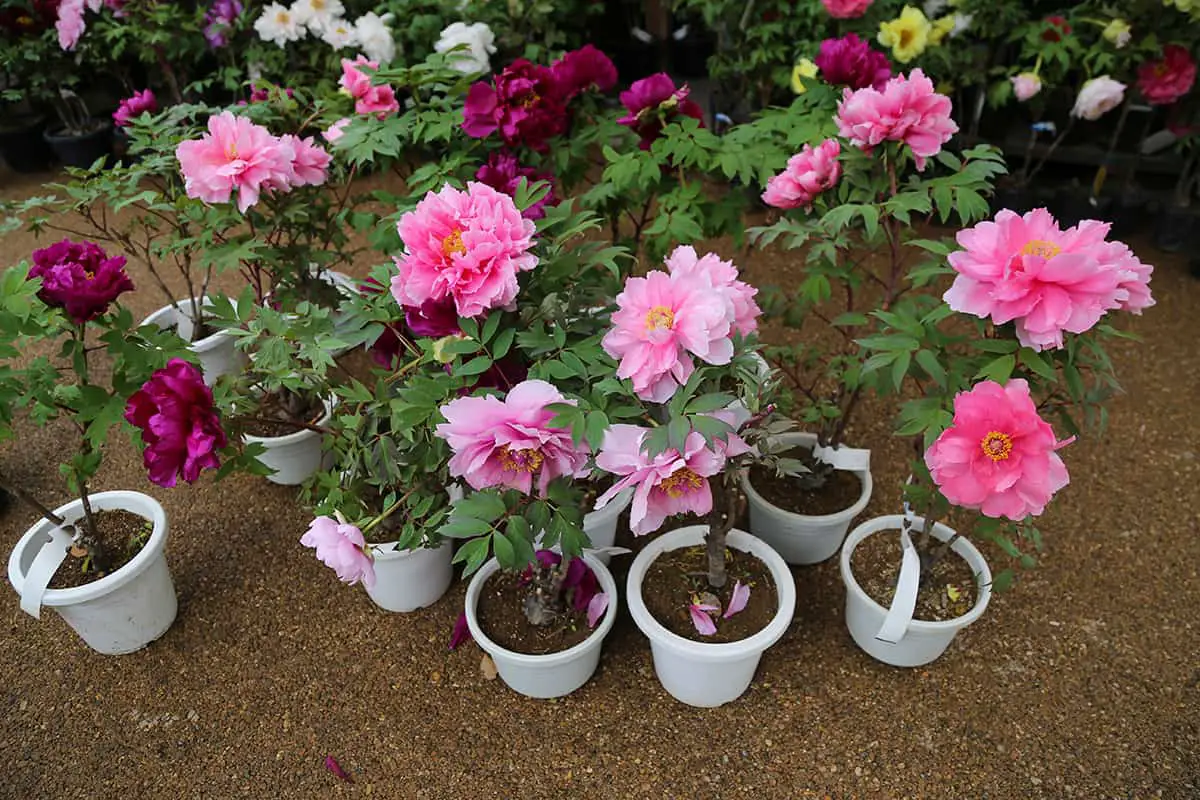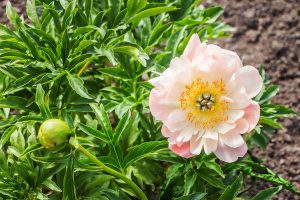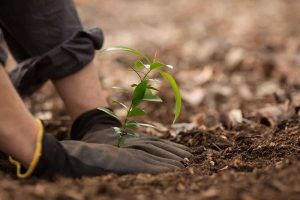Peonies produce luscious flowers and attractive foliage through spring and summer, making them popular perennial plants for all types of gardens.
They are compact in size, which leads many people to wonder if they are suitable for growing in pots. Here we look at the best ways to grow peonies in containers, and how their care differs from peonies grown in the ground.
Table of Contents
Can Peonies be Grown in Pots?
If you have a compact garden or a small terrace to work with, then you may be interested to know that peonies can be grown in pots. These dramatic flowering plants are very low maintenance when grown in ground soil, however, when grown in pots you may find that they need a little extra attention.
Growing peonies in pots is actually not that unusual, and as long as you have a big enough pot to accommodate your peony plant then it should be able to have a long and healthy life.
How Big Should Peony Pots Be?
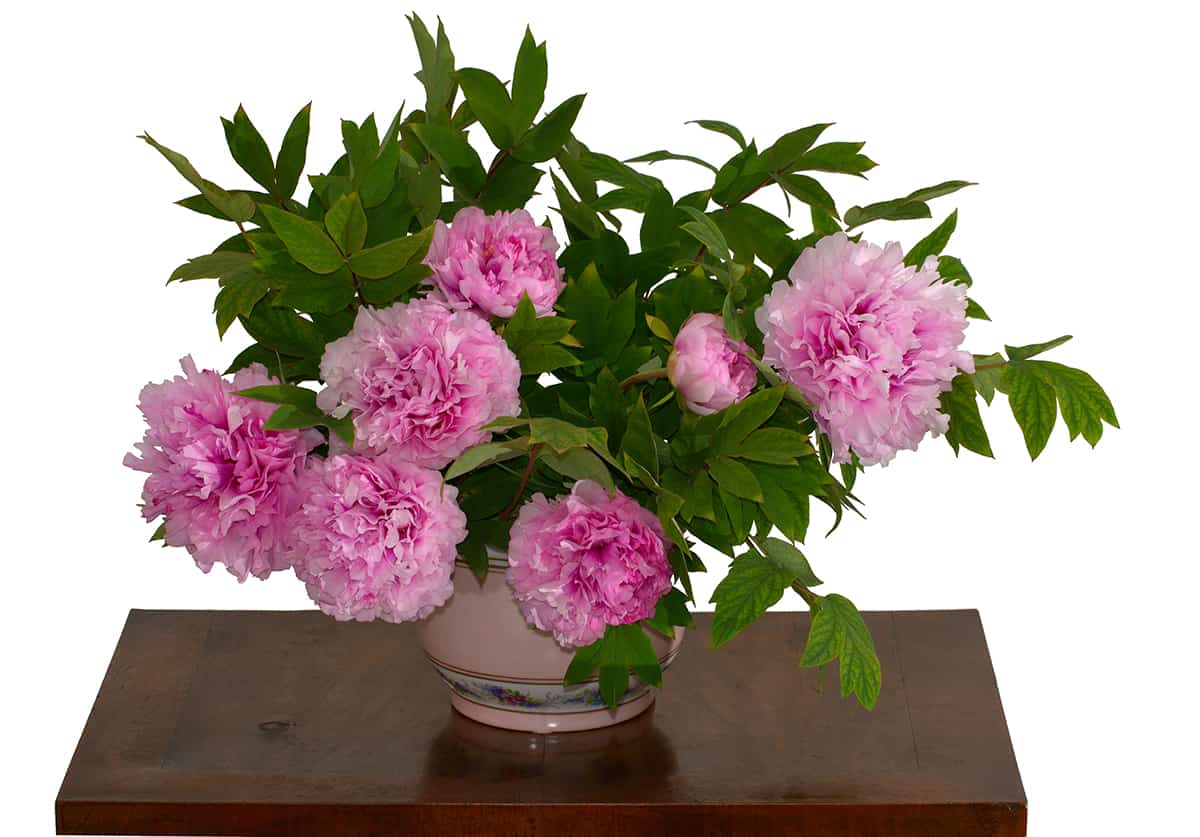
In order to ensure your peony can thrive, you’ll need quite a sizable pot. This is because although peonies are planted in the shallow area of the soil, they have roots that spread deeply into the soil. This ensures the roots can seek out moisture and nutrition, and it also helps to anchor the plants and provide stability to the long flowering stems. The minimum depth of a pot for a peony should be 1 and a half feet.
Before choosing a pot for your peony, you’ll need to know which variety of peony you are going to grow. This is because different peonies will have different expected mature sizes. The smallest types of peonies will grow to a height of 2 feet and a width of 2 feet, while larger peonies can become up to 4 feet in height, with a spreading width of up to 5 feet.
Your pot will need to have a diameter that is at least equal to the expected spread of the plant, so a peony that will grow to be 2 feet wide will need a pot that measures 2 feet across.
How to Plant Peonies in Pots
Planting a peony plant in a pot is much the same as planting it in the ground. You want to ensure you have the right type of soil for your peony, as well as make sure the plant will have enough room to grow to its full potential. Tubers should be planted early in spring, in the top few inches of the soil.
The ‘eyes’ of the tubers should be facing upwards, and they should only be covered with around one inch of soil. When peony tubers are planted too deep in the soil they will fail to flower. Water your peonies generously to help the tubers settle in, and continue with peony pot care.
Caring for Pot-Grown Peonies
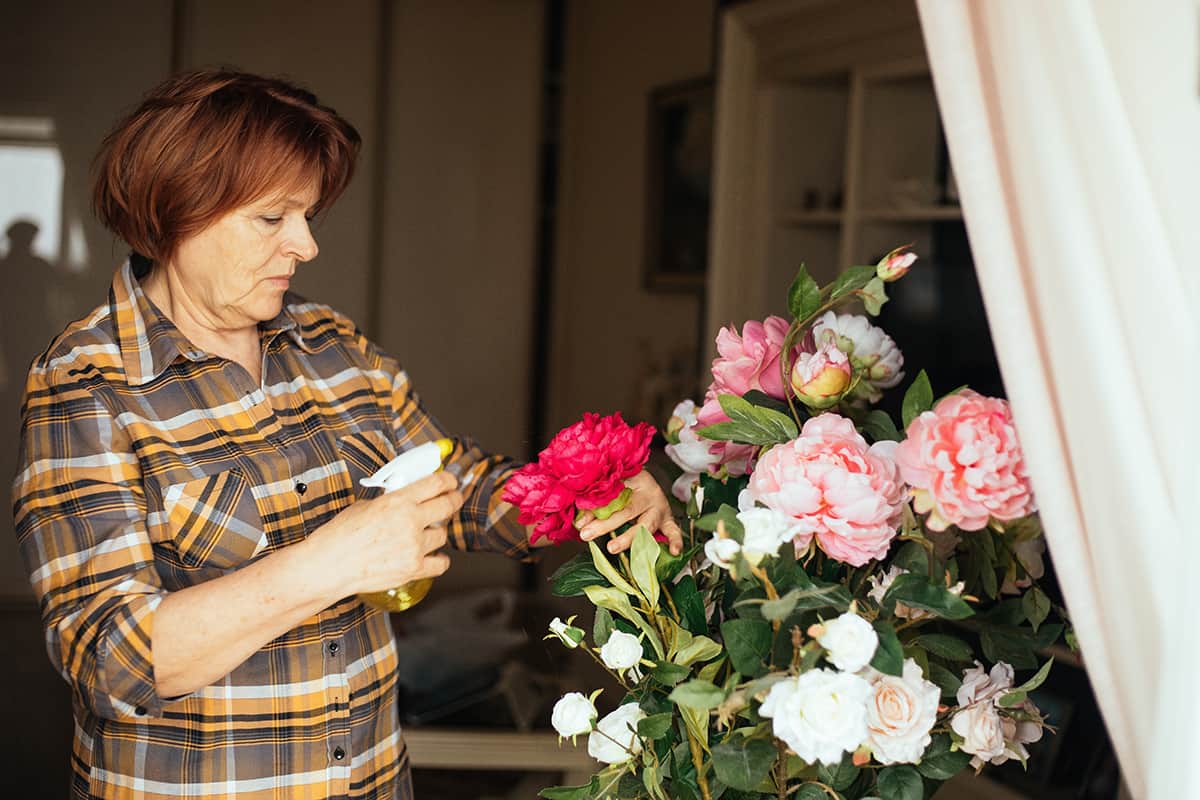
Caring for pot-grown peonies is mostly the same as caring for peonies that are grown in the ground, with a few slight differences.
Water
There are a few important tips when it comes to watering peonies the right way. Peonies should be grown in soil that is moderately moist throughout spring and summer. To avoid overwatering your pot-grown peony, you should allow the soil to partially dry out before adding more water to it. You can check this by using a moisture testing stick, or dip a finger into the soil to feel for moisture yourself. If the top few inches of the soil are dry, then you should water the plant again, but if it feels damp then leave it for another day.
The pot should have a drainage hole at the base to allow excess moisture to escape, avoiding any problems with waterlogging and root rot. If you live in a warm climate then you may find you need to water your peonies every day through summer, because the soil in a pot will dry out much more quickly than ground soil.
Also remember that when planted in the ground, peonies roots can bury themselves deep into the soil to seek out moisture, while the roots of a potted peony are confined to the soil in the pot.
This means if you don’t water the plant enough, then it will have no other options to get the moisture it needs, and will struggle to thrive. If dry soil is an issue, add mulch to the surface of the soil, as this can help to prevent water evaporation, so the soil will remain moist for longer in between watering.
Light
Peonies can be kept in full sun or partial shade, and this is true whether your peonies are planted in the ground or in a pot. With a pot-planted peony, you have the benefit of the pot obviously being fairly portable (although it will likely be heavy and may take a few people to move it!).
This means that if your peony is struggling in a position of full sun, you could move it to a slightly shadier spot in the garden to see if it fares better there. In cooler climates, it’s best to keep peonies in full sun; however, in warmer climates, these plants will enjoy the relief provided by a little shade on hot summer afternoons.
Preventing the plant from getting too hot in the sun can encourage the flowers to bloom for longer, so if you’re finding that your flowers don’t last longer than a week, you should try moving the plant to a shadier position.
Soil
Peonies can be grown in a wide range of soil types as long as they drain well. They aren’t fussy about soil pH, and they can adapt to sandy soils, clay soils, and most other soil types. However, peonies do prefer to grow in soil that is fertile and rich in organic content. For your potting soil mix, a combination of topsoil and perlite will work well at a ratio of 3 parts topsoil to 1 part perlite.
You could use a mixture of compost and sand, or compost and peat. These mixtures will make for soils that are fertile and well-draining. A well draining soil is essential to prevent water from pooling on the surface of the soil and to protect the roots of the peony from rotting. If soil retains too much water, the roots will rot and be unable to absorb the moisture and nutrients they need.
Fertilizer
Fertilizing your peonies is not a must for healthy peonies. In fact, it can perform well and produce beautiful flowers without fertilizers. However, fertilizers can give your peonies a boost that you can’t even expect.
If you have planted your potted peonies in a soil mix that contains compost, then this will provide enough nutrition to keep your plants thriving.
If your soil mixture is not especially fertile, then you can add some granular slow-release fertilizer to the mix during planting. You can also use a liquid fertilizer once a month through the growing season, but be sure to not choose one which is too heavy in nitrogen, as this will encourage foliage growth at the cost of flower production.
Pruning
Peonies do not need to be pruned to maintain their shape since they have compact growth habits. However, in fall herbaceous peonies will start to die back, and these should then be cut back to ground level. This ensures your pots do not look untidy through winter, and it will also help protect the plant from fungal disease during the wet time of year.
Overwintering
Peonies die back in the fall and return the following spring, so frost is not an issue for these plants because they are below ground level. However, sustained periods of below-freezing temperatures through winter can cause damage to the roots of the plants. When peonies are grown in the soil, their roots are better protected against low temperatures.
In pots, the roots of the plant are closer to the exposed air, and they will be more likely to suffer damage from freezing. Damaged roots will struggle to produce flowers the following spring, so for impressive blooming peonies it is essential to protect the roots through winter.
You can do this by wrapping your pot in garden fleece for extra insulation, or you could move the pots to a sheltered location, such as a garden shed, greenhouse, or garage. Mulching the top of the soil can also help to protect the roots by adding insulation. However, this will only help the uppermost roots, rather than any roots near the side walls of the pot.
Dividing
When plants appear to be outgrowing their pots, it is usually advisable to repot the plants into larger pots or divide the plants to make multiple smaller plants. This is not recommended for peonies, since they do not respond well to having their roots disturbed. You should plant your peony in a pot that has enough growing space in it to avoid needing to repot or divide the plant at a later date.
When a peony has its roots disturbed this will usually cause it to struggle to bloom the following season. Once a peony has been planted, it prefers to stay in that position for the duration of its life.
